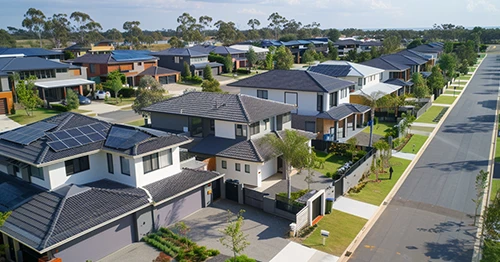Updated: 26 Aug, 2024
The home loan landscape is always evolving, and the latest buzz is all about interest rate cuts. Banks across Australia, from the big players to the smaller ones, are lowering their fixed interest rates, sparking curiosity and speculation among borrowers.
Recently, three of Australia’s major banks, CBA, Westpac and NAB, cut their fixed interest rates.
- CBA cut its 1-year fixed rate by 20 basis points, to 6.74%, and cut its 3-year fixed rate by 70 basis points, to 6.24%.
- Westpac cut its two, three four and five-year fixed rates by 80 basis points, to 5.89%
- NAB cut its three-year fixed rate by 60 basis points, to 5.99%.
What’s driving these changes, and what could come next? We asked our experts for their insights.
Fixed Rates Are Dropping – Here’s Why
Home Loan Experts Senior Mortgage Broker Jonathan Preston observes, “I think all banks will cut fixed rates, not just non-majors; the non-majors are probably just hungrier for business,” he explains. The movement by major and minor players alike indicates a broad consensus: “Rates are likely to drop in the near future,” driven by cues from the financial markets.”
Home Loan Experts CEO Alan Hemmings echoes this view. “Last month, NAB reduced its three-year fixed rate, and now Westpac has announced cuts to its one-year and five-year fixed rates. I expect we’ll see more banks following suit,” Hemmings notes. This broad-based movement suggests a larger market trend that borrowers should keep in mind.
What the Market and Economic Indicators Are Telling Us
Hemmings and Preston believe these rate cuts are a response to broader economic and market expectations. Preston explains, “The economy is a little soft and is being supported by factors like the NDIS and a surge in immigration.”
He warns about the volatility of economic conditions, however, mentioning, “Things can change quickly, and there’s always the risk of inflation picking up again.” Potential rate cuts in the US might also push the Reserve Bank of Australia (RBA) to lower rates.
Preston adds that financial markets significantly influence central bank decisions. “In the end, markets are what drive central bank actions. Right now, the signals suggest rates are more likely to fall than rise, and banks are responding by cutting both term deposit rates and fixed rates,” he explains.
Hemmings provides further clarity on the mechanics of these changes. “Fixed rates aren’t tied directly to the cash rate, like variable rates. They’re more influenced by what the market expects for fixed rates,” Hemmings says. This often means that fixed rates move before variable rates, potentially signalling future decreases.
Should You Lock In A Fixed Rate Now?
With fixed rates on the decline, the question on many borrowers’ minds is whether now is the right time to lock in a lower rate. Hemmings advises, “If your current variable rate is higher than the fixed rates on offer, fixing could be a good move. But if the difference is small, it might not be worth it.”
He gives an example to illustrate his point: “For a client currently on a rate of 6.14%, fixing at the 5.99% rate for five years might not be ideal. The difference is just one rate cut away. Many economists predict the cash rate could drop by 75 basis points over the next two years, meaning clients could end up paying more on the fixed rate.”
Making The Smart Decision for Your Situation
As banks continue to cut fixed rates, borrowers may feel excitement and caution. Lower rates are enticing, but carefully evaluating your loan situation and future expectations is essential.
Whether you’re considering locking in a fixed rate or staying with a variable rate, talking to a mortgage expert can help you navigate these changes.
If you’re unsure about what to do next, we’re here to help. Reach out to us at 1300 889 743 or enquire online for free, today. Let’s work together to find the right solution for your home loan needs.





